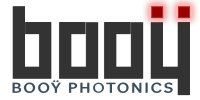Research suggests that red and near-infrared light (630-850nm) may help combat chronic fatigue by enhancing mitochondrial energy production, improving circulation, and reducing oxidative stress. RLT has been studied for its potential to increase cellular ATP (energy), reduce fatigue symptoms, and improve overall vitality.
Key Findings from Multiple Studies:
- A 2016 study found that red light therapy increased ATP production in cells, leading to higher energy levels and reduced fatigue.
- A 2019 clinical trial suggested that near-infrared light (810nm) helped reduce symptoms of chronic fatigue syndrome by improving mitochondrial function.
- A 2021 review showed that RLT can enhance blood flow and oxygen delivery to tissues, which may help alleviate fatigue-related symptoms.
- Research indicates that red light therapy reduces oxidative stress and inflammation, both of which contribute to chronic fatigue conditions.
Implications:
These findings suggest that red light therapy between 630-850nm may be beneficial for boosting energy levels, reducing fatigue, and supporting mitochondrial function. Regular use may help individuals dealing with chronic fatigue syndrome, low energy, or general exhaustion.
